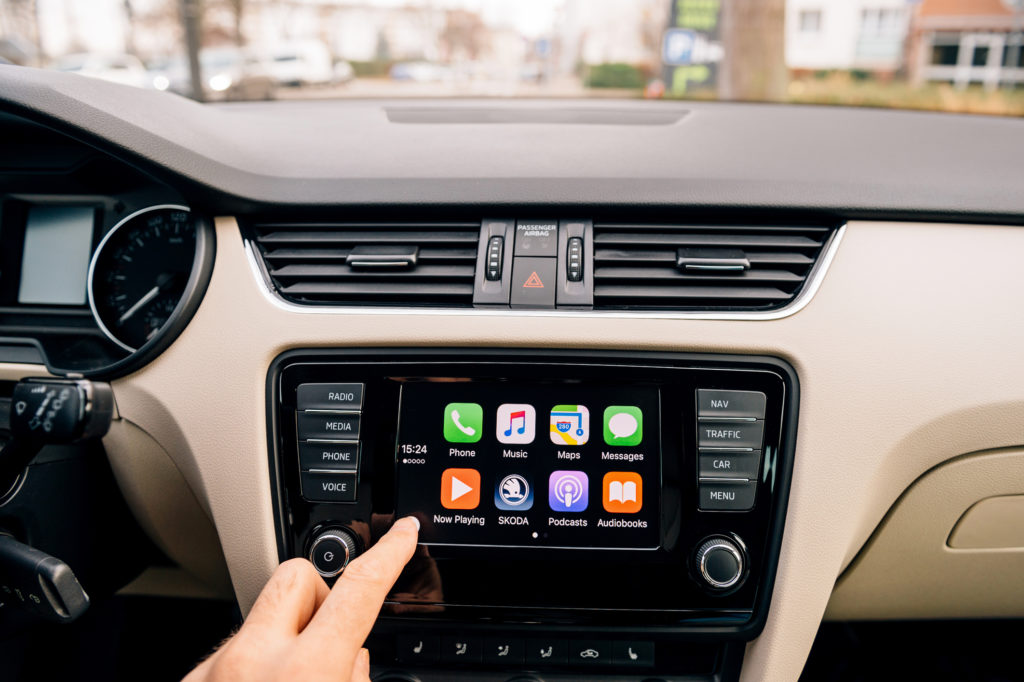 I’ve known Roger Lanctot for several years, coinciding with the time Jacobs Media and jācapps became very interested in connected cars. Oddly enough, Arbitron put us together for what turned out to be a successful joint “Super Session” at the Radio Show in Orlando back in 2013. It turned out to be a great collaboration. Roger joined us that fall at our first DASH Conference, and we continue to spend time together at events like CES.
I’ve known Roger Lanctot for several years, coinciding with the time Jacobs Media and jācapps became very interested in connected cars. Oddly enough, Arbitron put us together for what turned out to be a successful joint “Super Session” at the Radio Show in Orlando back in 2013. It turned out to be a great collaboration. Roger joined us that fall at our first DASH Conference, and we continue to spend time together at events like CES.
Officially, he’s Director, Automotive Connected Mobility, Global Automotive Practice for Strategy Analytics. But I prefer to think about Roger as “the most connected person in the connected car space.” He knows everyone, meets with automakers, Tier 1 suppliers, and anybody and everybody who operates in this fast moving world of automotive mobility.
connected car space.” He knows everyone, meets with automakers, Tier 1 suppliers, and anybody and everybody who operates in this fast moving world of automotive mobility.
Roger’s been at this for a while, featuring more than 25 years of experience as a journalist, analyst, and consultant advising electronics companies, car companies, wireless carriers, and developers on product and market strategy.
He recently wrote a piece in response to Tesla’s decision to removed AM radio from its new Model 3s. You can read it here.
And he graciously agreed to pen this “Guest List” for our blog: “The 5 Things Radio Broadcasters Should Know About The Auto Industry.”
1. Car makers hate Apple and Google (Alphabet)
But they hate the high cost of developing and maintaining (software updates) infotainment systems (car stereos) even more. Apple and Alphabet are now telling car makers how to build their infotainment systems (screen size, resolution, refresh rates, colors, fonts, etc.) and, in fact, have certification authority over all new infotainment systems. In other words, radio is not a part of this conversation or process. Radio is not represented. So, radio is depending on the kindness of strangers to continue to play a role in the dashboard.
2. Car makers are desperate to differentiate
This is why no two infotainment systems/car stereos are alike. This is also why you occasionally get into a rental car and get angry because you can’t figure out how to turn the radio on/off, change the station or band, or alter the balance, fade or tone. This desire for differentiation actually represents an opportunity for radio – in contrast to the homogenization and commoditization offered by Apple and Alphabet.
3. Sound quality matters in cars
Sure, a car is a noisy environment. But car makers and their suppliers are becoming increasingly clever in developing echo cancellation and noise reduction solutions and personalizing increasingly high quality audio processing in their cars. You are also seeing the wider use of brand names to emphasize this movement toward higher quality sound in the car. The expansion of electrification of powertrains will broaden this trend – less noise.
4. Curation matters
There’s a reason SiriusXM has been so successful. The stations may be identical across the entire country, making localization of content a challenge, but much of SiriusXM is still curated – just like broadcast radio. This is a big advantage over the playlist and shuffle approaches of Spotify and Pandora.
There’s nothing like a local human voice in touch with local news, weather, sports, traffic and … accents. Radio provides a non-distracting, regulator-friendly source of content and also happens to be a source of a lot of car maker and car dealer advertising – along with car insurance, car repair and maintenance. Radio is car-centric.
Bear in mind, though, that the entire reason that SiriusXM found a home in the car is the subsidies. SiriusXM bought its way in with kickbacks and subsidies to the car makers that now total in the billions of dollars. Radio has had a free ride so far – something to think about.
5. Technology
Car makers understand how to make car radios work in some of the harshest conditions and environments. They spend hundreds of millions of dollars to overcome external signal interference as well as electromagnetic interference in the vehicle – i.e. EVs have presented a challenge that GM and Nissan have overcome but that Tesla and BMW have thrown in the towel on.
Radio and car makers are partners in delivering quality curated content in massive localized quantities to hundreds of millions of cars. Surely these industries can find a way to more effectively align their interests and capitalize on their assets and resources for their mutual benefit.
More Guest Lists
- Gary Shapiro: A Preview of CES 2018 From CTA’s Innovative CEO
- Rob Kass: 5 Things Every Radio Professional Should Know About Nielsen’s SDK
- Tamar Charney: 5 Tips For Great Podcasts
- Professor Dave Whitt: 5 Reasons Why It’s Important to Teach Popular Music History
- Sean Pollock: 5 Things About Millennials Every Radio Broadcaster (and Sales Team) Should Know
- “Honey, would you please talk to Alexa?” - March 28, 2025
- On The Radio, It’s Always 5 O’Clock Somewhere - March 27, 2025
- Radio: Still King Of The Car? - March 26, 2025





Fred-this is all well and good, but unless the NAB and others read it and act on it AM/FM is going to continue to be pushed aside. AM radio is such awful quality in most receivers that it is difficult to listen to. Even today a lot of the stations have decided (thankfully) to turn off their AM IBOC transmitters and up the frequency response, the reality of AM being tough to listen to is all too real. FM is being hurt with the proliferation of translators too. Broadcasters need to step up the promotion of their positives, make it compelling for the listener and lobby the car makers and technology developers to make sure the latest and greatest in broadcast radio is included. The digital world is most certainly making noise to the manufacturers (“Apple and Google are telling them how to make their infotainment systems”..) – is broadcast radio? Sirius/XM are doing well because they offer free subscriptions to car buyers as well as the curation. Radio can provide a unique experience to drivers-but if they don’t know it’s there it won’t get off the ground. Im just sayin’.
Dave, some good comments and observations. What was once a very simple relationship – radio and cars – has become complex, as you point out. The NAB is on it – they have a number of initiatives in place and being launched that addresses some of the key issues, including radio’s relationships with OEMs. I believe that radio will continue to be the go-to medium in cars, but there is a growing list of complications. And it will help if radio companies work together on these initiatives, speaking in one voice. Thanks for taking the time.
Fred. One decade. 10 years. That’s about how much time we have till radio will be only marginally viable. The average vehicle on the road is 11 years old…and these cars continue to feature radio as the primary audio source. New digital platforms will displace radio’s prominence on the dash in the next 10 years.
I’m not sure being “local and curated” will develop enough of an audience to maintain the current cost structure of the business…so we have to do what we’ve talked about for a decade. More local digital. More local events and local sports.
Sadly – we used to own this town…:)
We did indeed, Jackson. I don’t think the party’s over, but radio operators need to adopt the mindset they compete against virtually everyone – not just the other Country station in town. What is it about your brand that’s proprietary? And how can you leverage your local presence to provide content they can’t get anywhere else. Your idea about local sports streams reminds me of WTMJ in Milwaukee – a station that has committed to the local sports scene via streaming coverage of hometown games. We highlighted “Preps Live” as part of our “Radio’s Most Innovative” feature back in 2015. It’s a good read. Thanks for the comment.